Reverse lens macro is one way of creating macro images. The art of macro photography is, making images of objects at a very close range. As with any specialized area of photography, it is in a creative world unto it’s own.
This is true not only in terms of the specialized gear required to tell a story at a true 1:1 scale. But, also more so in regard to the patience and practice needed to produce a clear and consistent result.
In this article, we’ll explore a technique known as reverse lens macro. We will consider one economical approach to producing amazing close-up images by using a simple reverse-ring adapter and a manually-operated lens.
What is a reverse-ring adapter?
A reverse-ring adapter is a small piece that essentially flips the face of a lens. This allows the glass elements to be reversed and used as a macro lens.
If you’ve ever looked through a pair of binoculars from the opposite direction, you see that what is drawn to a closer view one way is now pushed into the distance. A rudimentary analogy, but a good visual on the nature of macro vs. telephoto and how these lens groups are constructed for their intended function.
While an adapter is by no means a substitute for a true macro lens constructed solely for this purpose, using a reverse-ring filter adapter can be a great way to initially explore the medium. This way you can try it before making an informed leap into any costly gear investments.
Attaching a reversing ring
To fine the right filter adapter for your camera and lens mount, search your favorite gear resource for reverse (or reversing) ring adapters at the proper lens filter diameter. This is typically labeled on the face (and/or side) of the lens housing.
The samples in this article were captured with a 58mm Canon-mount adapter purchased on Amazon for less than $20.
.mgl-tiles { display: none; } #mgl-gallery-634ed9ff55330 { margin: -5px; width: calc(100% + 10px); } #mgl-gallery-634ed9ff55330 .mgl-box { padding: 5px; } @media screen and (max-width: 768px) { #mgl-gallery-634ed9ff55330 { margin: -5px; width: calc(100% + 10px); } #mgl-gallery-634ed9ff55330 .mgl-box { padding: 5px; } } @media screen and (max-width: 460px) { #mgl-gallery-634ed9ff55330 { margin: -5px; width: calc(100% + 10px); } #mgl-gallery-634ed9ff55330 .mgl-box { padding: 5px; } }
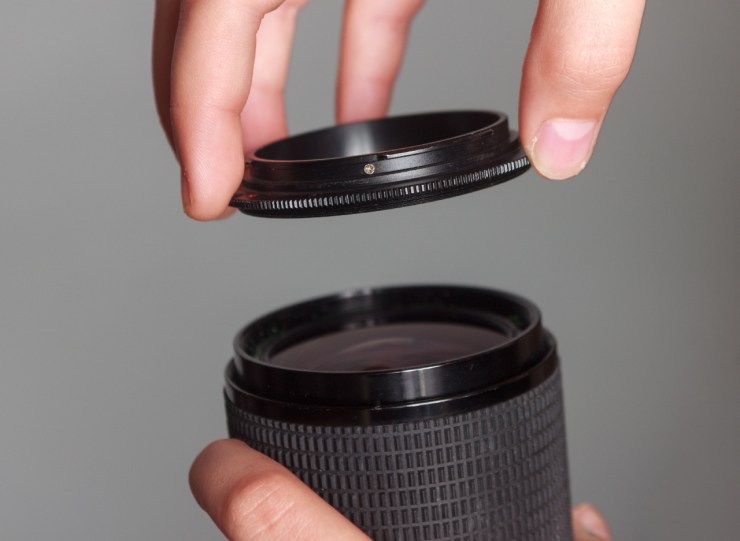
Once you’ve located the right piece for your camera make, attach the filter adapter by threading clockwise directly on to the face of the lens. Be sure to remove any existing filters and lens hood before attaching for best results.
.mgl-tiles { display: none; } #mgl-gallery-634ed9ff586e7 { margin: -5px; width: calc(100% + 10px); } #mgl-gallery-634ed9ff586e7 .mgl-box { padding: 5px; } @media screen and (max-width: 768px) { #mgl-gallery-634ed9ff586e7 { margin: -5px; width: calc(100% + 10px); } #mgl-gallery-634ed9ff586e7 .mgl-box { padding: 5px; } } @media screen and (max-width: 460px) { #mgl-gallery-634ed9ff586e7 { margin: -5px; width: calc(100% + 10px); } #mgl-gallery-634ed9ff586e7 .mgl-box { padding: 5px; } }
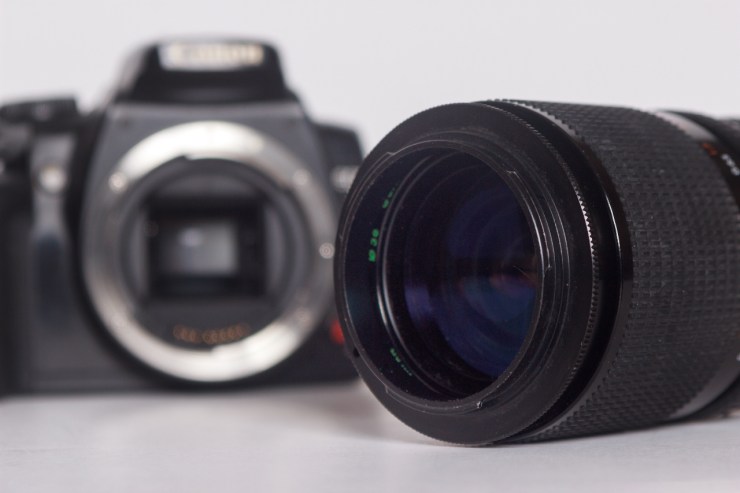
To avoid cross-threading the filter grooves, place the (externally) threaded side of the adapter down loosely on the (internally) threaded lens housing. Then turn counterclockwise gently until you feel the threads click into place before spinning clockwise to hand-tighten. Be mindful not to over-crank.
.mgl-tiles { display: none; } #mgl-gallery-634ed9ff58d13 { margin: -5px; width: calc(100% + 10px); } #mgl-gallery-634ed9ff58d13 .mgl-box { padding: 5px; } @media screen and (max-width: 768px) { #mgl-gallery-634ed9ff58d13 { margin: -5px; width: calc(100% + 10px); } #mgl-gallery-634ed9ff58d13 .mgl-box { padding: 5px; } } @media screen and (max-width: 460px) { #mgl-gallery-634ed9ff58d13 { margin: -5px; width: calc(100% + 10px); } #mgl-gallery-634ed9ff58d13 .mgl-box { padding: 5px; } }
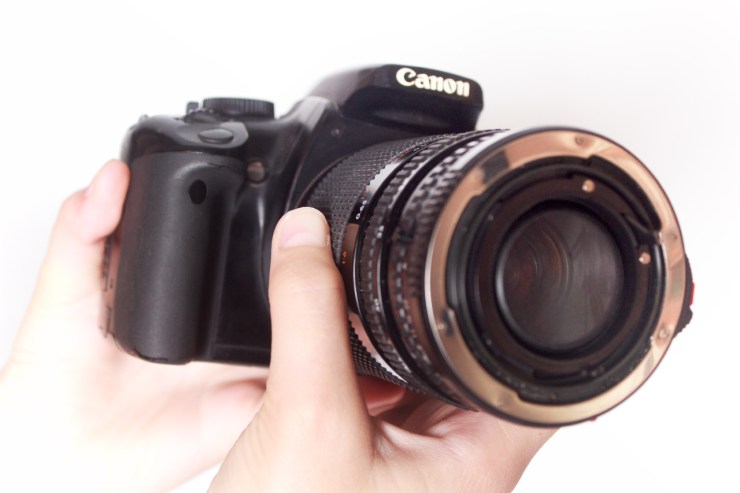
Once installed, the lens can now be attached to the camera in the reverse direction via the mounting-side of the adapter and we’re ready to start shooting.
Note that all of the electronic connections are now reversed as well and disengaged from the camera body. This renders any automatic control of the lens ineffective. It’s all manual from here. Whereas a true macro lens is designed to maintain full-electronic command and control.
Filling the frame
Making macro images is not always about the extreme close-up. It’s also an ideal approach to filling a given frame when addressing a very small subject.
.mgl-tiles { display: none; } #mgl-gallery-634ed9ff59138 { margin: -5px; width: calc(100% + 10px); } #mgl-gallery-634ed9ff59138 .mgl-box { padding: 5px; } @media screen and (max-width: 768px) { #mgl-gallery-634ed9ff59138 { margin: -5px; width: calc(100% + 10px); } #mgl-gallery-634ed9ff59138 .mgl-box { padding: 5px; } } @media screen and (max-width: 460px) { #mgl-gallery-634ed9ff59138 { margin: -5px; width: calc(100% + 10px); } #mgl-gallery-634ed9ff59138 .mgl-box { padding: 5px; } }

Focal plane and depth-of-field can be a challenge when framing subjects at such short distances. When working with a prime (fixed focal plane) lens, focus is essentially controlled by the distance to the subject from the face of the lens only and creates a potential limitation when a subject starts to spill outside the frame when within the field of focus.
.mgl-tiles { display: none; } #mgl-gallery-634ed9ff59523 { margin: -5px; width: calc(100% + 10px); } #mgl-gallery-634ed9ff59523 .mgl-box { padding: 5px; } @media screen and (max-width: 768px) { #mgl-gallery-634ed9ff59523 { margin: -5px; width: calc(100% + 10px); } #mgl-gallery-634ed9ff59523 .mgl-box { padding: 5px; } } @media screen and (max-width: 460px) { #mgl-gallery-634ed9ff59523 { margin: -5px; width: calc(100% + 10px); } #mgl-gallery-634ed9ff59523 .mgl-box { padding: 5px; } }
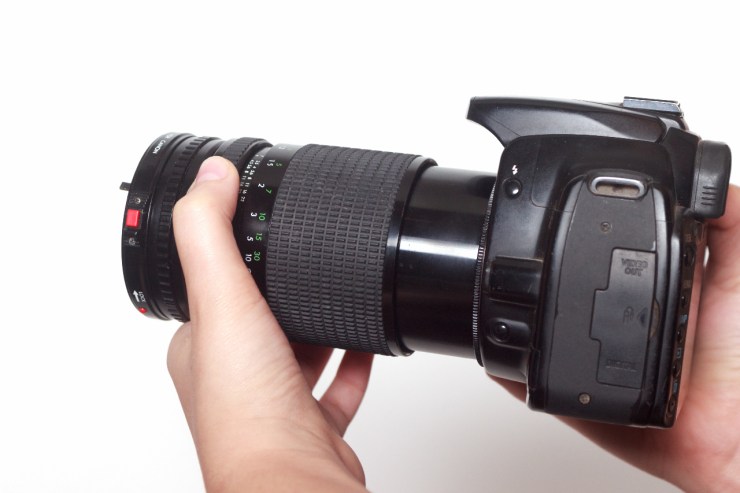
Using a moderate zoom (in this case, an older manually-operated Quantaray 28-80mm f/3.5) will add a ton of flexibility in terms of shooting position and being able to punch-in or out to more easily frame a shot.
Telephoto vs. prime
.mgl-tiles { display: none; } #mgl-gallery-634ed9ff59e2a { margin: -5px; width: calc(100% + 10px); } #mgl-gallery-634ed9ff59e2a .mgl-box { padding: 5px; } @media screen and (max-width: 768px) { #mgl-gallery-634ed9ff59e2a { margin: -5px; width: calc(100% + 10px); } #mgl-gallery-634ed9ff59e2a .mgl-box { padding: 5px; } } @media screen and (max-width: 460px) { #mgl-gallery-634ed9ff59e2a { margin: -5px; width: calc(100% + 10px); } #mgl-gallery-634ed9ff59e2a .mgl-box { padding: 5px; } }
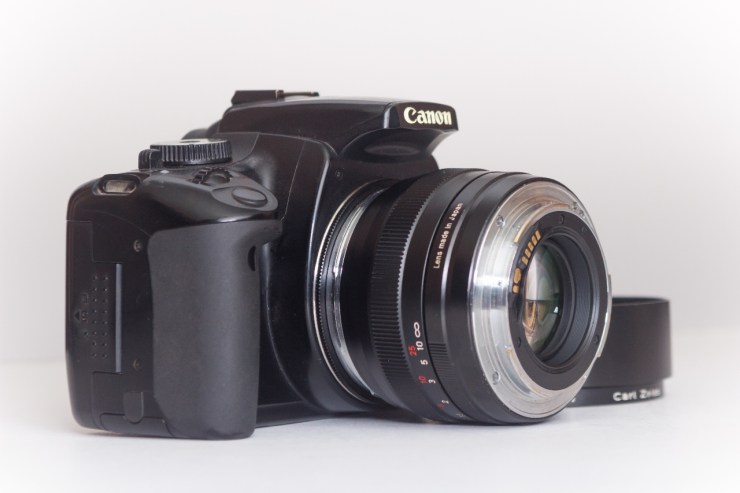

The above image is captured at a fixed 50mm focal plane (fully-open @ f/1.4 with a Zeiss prime lens), sending the edges of the subject out of view at the desired point of focus.
If we were shooting in normal (non-macro) focal lengths, we could simply take a step back and re-frame to contain the subject.
However, with a reverse-lens (or any macro) setup, even the slightest movement can be extreme and moving only half an inch back or forward will place the subject out of a suitable focal range.
.mgl-tiles { display: none; } #mgl-gallery-634ed9ff5a4e9 { margin: -5px; width: calc(100% + 10px); } #mgl-gallery-634ed9ff5a4e9 .mgl-box { padding: 5px; } @media screen and (max-width: 768px) { #mgl-gallery-634ed9ff5a4e9 { margin: -5px; width: calc(100% + 10px); } #mgl-gallery-634ed9ff5a4e9 .mgl-box { padding: 5px; } } @media screen and (max-width: 460px) { #mgl-gallery-634ed9ff5a4e9 { margin: -5px; width: calc(100% + 10px); } #mgl-gallery-634ed9ff5a4e9 .mgl-box { padding: 5px; } }
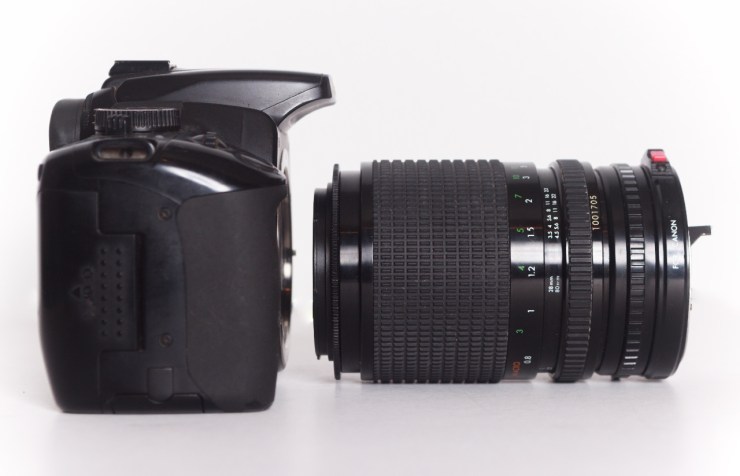

The above sample is captured from the same position with the old 28-80mm zoom. This provided a more flexible range of focus to contain the subject within the frame at an equally close proximity.
Get close
When shooting macro, acquiring focus is difficult without getting very close to the subject — considerably closer than usual. So much so that it can take a little getting used to at first. In fact, I was having a difficult time focusing on a simple, static object only three inches from the lens face.
.mgl-tiles { display: none; } #mgl-gallery-634ed9ff5ab9f { margin: -5px; width: calc(100% + 10px); } #mgl-gallery-634ed9ff5ab9f .mgl-box { padding: 5px; } @media screen and (max-width: 768px) { #mgl-gallery-634ed9ff5ab9f { margin: -5px; width: calc(100% + 10px); } #mgl-gallery-634ed9ff5ab9f .mgl-box { padding: 5px; } } @media screen and (max-width: 460px) { #mgl-gallery-634ed9ff5ab9f { margin: -5px; width: calc(100% + 10px); } #mgl-gallery-634ed9ff5ab9f .mgl-box { padding: 5px; } }

Only by slowly rocking forward an inch or so did my subject begin to come into clear view. My advice here is to get as close as possible without impeding your primary light source. Be patient and subtly adjust your position to locate and acquire focus.
All of the images in this article are hand-held in natural light. They were modified by a shoot-thru diffuser tucked into a moderately shaded window.
Creative bokeh & focus stacking
Macro photography is limited to working in very thin planes of focus. Macro lenses inherently generate soft out-of-focus areas useful for creative applications. For those who enjoy using bokeh to draw the eye, this would be a fun place to experiment with composition ideas.
.mgl-tiles { display: none; } #mgl-gallery-634ed9ff5af8a { margin: -5px; width: calc(100% + 10px); } #mgl-gallery-634ed9ff5af8a .mgl-box { padding: 5px; } @media screen and (max-width: 768px) { #mgl-gallery-634ed9ff5af8a { margin: -5px; width: calc(100% + 10px); } #mgl-gallery-634ed9ff5af8a .mgl-box { padding: 5px; } } @media screen and (max-width: 460px) { #mgl-gallery-634ed9ff5af8a { margin: -5px; width: calc(100% + 10px); } #mgl-gallery-634ed9ff5af8a .mgl-box { padding: 5px; } }

Conversely, a given frame can sometimes require the merging of dozens, if not hundreds of images to produce a more complete focus in post production.
Skilled macro shooters use a technique known as focus stacking. Using a layered Photoshop workflow to mitigate the effect and manually generate a complete focus across their subjects.
Live subjects
Any live or potentially moving subject presents a major challenge in terms of acquiring a clean macro exposure. Using a moderate telephoto zoom will be considerably easier and a bit less invasive for live subjects as far as framing a shot.
.mgl-tiles { display: none; } #mgl-gallery-634ed9ff5b381 { margin: -5px; width: calc(100% + 10px); } #mgl-gallery-634ed9ff5b381 .mgl-box { padding: 5px; } @media screen and (max-width: 768px) { #mgl-gallery-634ed9ff5b381 { margin: -5px; width: calc(100% + 10px); } #mgl-gallery-634ed9ff5b381 .mgl-box { padding: 5px; } } @media screen and (max-width: 460px) { #mgl-gallery-634ed9ff5b381 { margin: -5px; width: calc(100% + 10px); } #mgl-gallery-634ed9ff5b381 .mgl-box { padding: 5px; } }
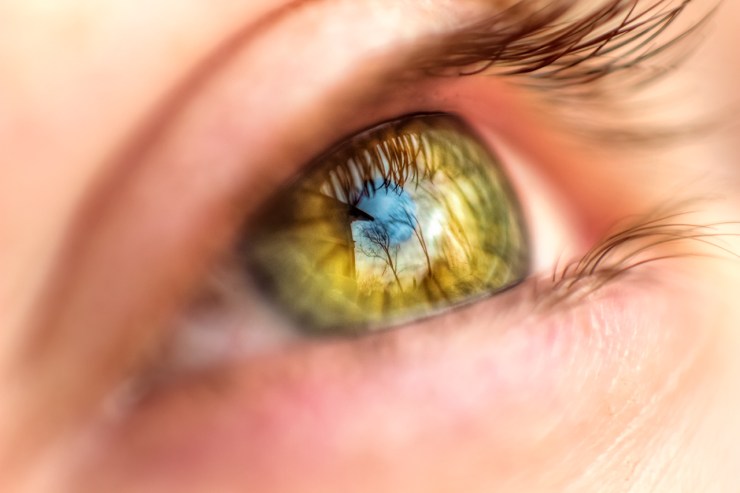
In the above image, having tried for a while in vain to combat a slow and steady sway in-and-out of focus, the best solution was to have my subject lean back comfortably against a wall to make hand-held focusing a much easier task.
It’s imperative to keep in mind that even the slightest movement is enough to throw off the intended focal point. When shooting macro images of a live subject, doing all we can to stabilize the scene will go a long way in producing a cleaner result.
Wide-angle warning
A quick word of caution for those considering a wide-angle zoom in conjunction with an APS-C (crop sensor) Canon body.
.mgl-tiles { display: none; } #mgl-gallery-634ed9ff5b85f { margin: -5px; width: calc(100% + 10px); } #mgl-gallery-634ed9ff5b85f .mgl-box { padding: 5px; } @media screen and (max-width: 768px) { #mgl-gallery-634ed9ff5b85f { margin: -5px; width: calc(100% + 10px); } #mgl-gallery-634ed9ff5b85f .mgl-box { padding: 5px; } } @media screen and (max-width: 460px) { #mgl-gallery-634ed9ff5b85f { margin: -5px; width: calc(100% + 10px); } #mgl-gallery-634ed9ff5b85f .mgl-box { padding: 5px; } }
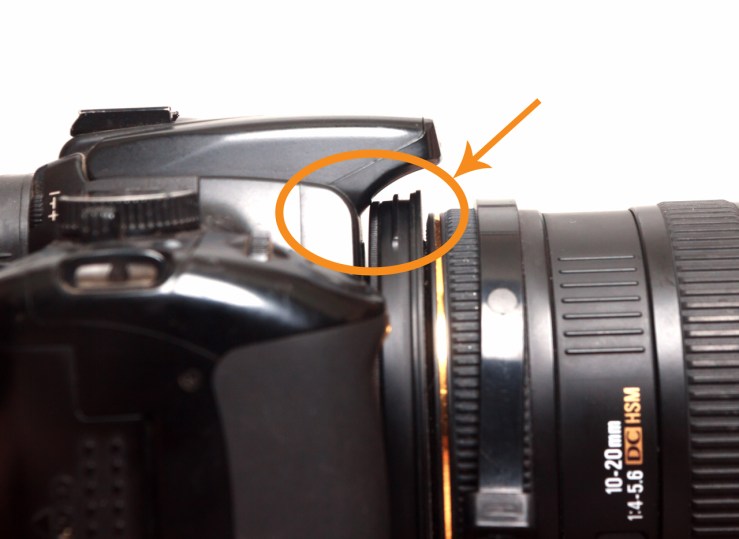
When experimenting with a Sigma 10-20mm f/4 and a Canon crop sensor body, I found that the bulky flange of the 77mm Fotodiox reversing ring adapter, was bumping slightly into the flash housing (as pictured above). This was just enough to prevent the lens from fully mounting.
It does appear that there is a bit more void space between the lens mount and the upper housing on full-frame Canon bodies. These accommodate a clean fit, though I’ve yet to fully test this issue personally.
I would strongly recommend reading any and all reviews available. This way you’ll be absolutely certain the adapter ring you’re seeking will work with your camera body.
Seek out older lenses
One of the most appealing aspects of reverse lens macro is that it has no allegiances with specific lens manufacturers. The 28-80mm lens used in this article has been on the shelf for a good 20+ years. It was far more effective than the newer 50mm prime — in most cases.
.mgl-tiles { display: none; } #mgl-gallery-634ed9ff5bc70 { margin: -5px; width: calc(100% + 10px); } #mgl-gallery-634ed9ff5bc70 .mgl-box { padding: 5px; } @media screen and (max-width: 768px) { #mgl-gallery-634ed9ff5bc70 { margin: -5px; width: calc(100% + 10px); } #mgl-gallery-634ed9ff5bc70 .mgl-box { padding: 5px; } } @media screen and (max-width: 460px) { #mgl-gallery-634ed9ff5bc70 { margin: -5px; width: calc(100% + 10px); } #mgl-gallery-634ed9ff5bc70 .mgl-box { padding: 5px; } }
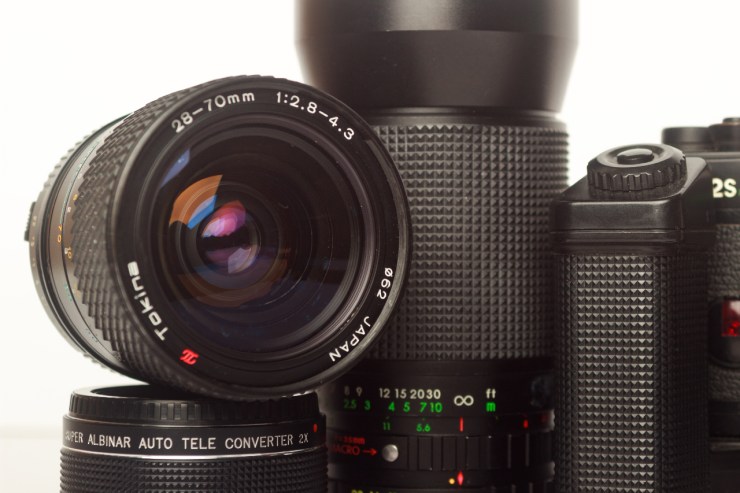
In fact, I recently noticed a similar lens available through KEH.com for less than $10. If you happen to have old lenses laying around, this is a great way to let them shine in new ways.
For those new to the concept, search far and wide for manually-operated zooms and primes; you’ll be pleased to find that older glass is amazingly inexpensive these days and fairly easy to come by comparatively.
Final thoughts
In my opinion, macro photography works the smaller, less appreciated muscles taken for granted. It brings a renewed sense of vision and patience (or lack thereof) to my workflow. Revealing how impatient and sloppy I can sometimes be, and serves as a reminder to slow down and savor.
Life presents much more than what initially meets the 50mm eye, and reverse lens macro is one capable approach to learning and experiencing life at full-scale.
Hope you find yourself inspired to grab that old glass and get it back in the rotation.
Tell your story with the second annual Visual Storytelling Conference!
Experience four days of interactive, online training sessions featuring a range of educational content with experienced photographers and content creators. This free event kicks off with a series of technical boot camps to build essential skills, followed by live, online sessions on photography, video, business and social media. Join live from March 10-13, 2022!
